Bowhunting Whitetail Deer:
A Beginner's Guide
By Bill Bernhardt |
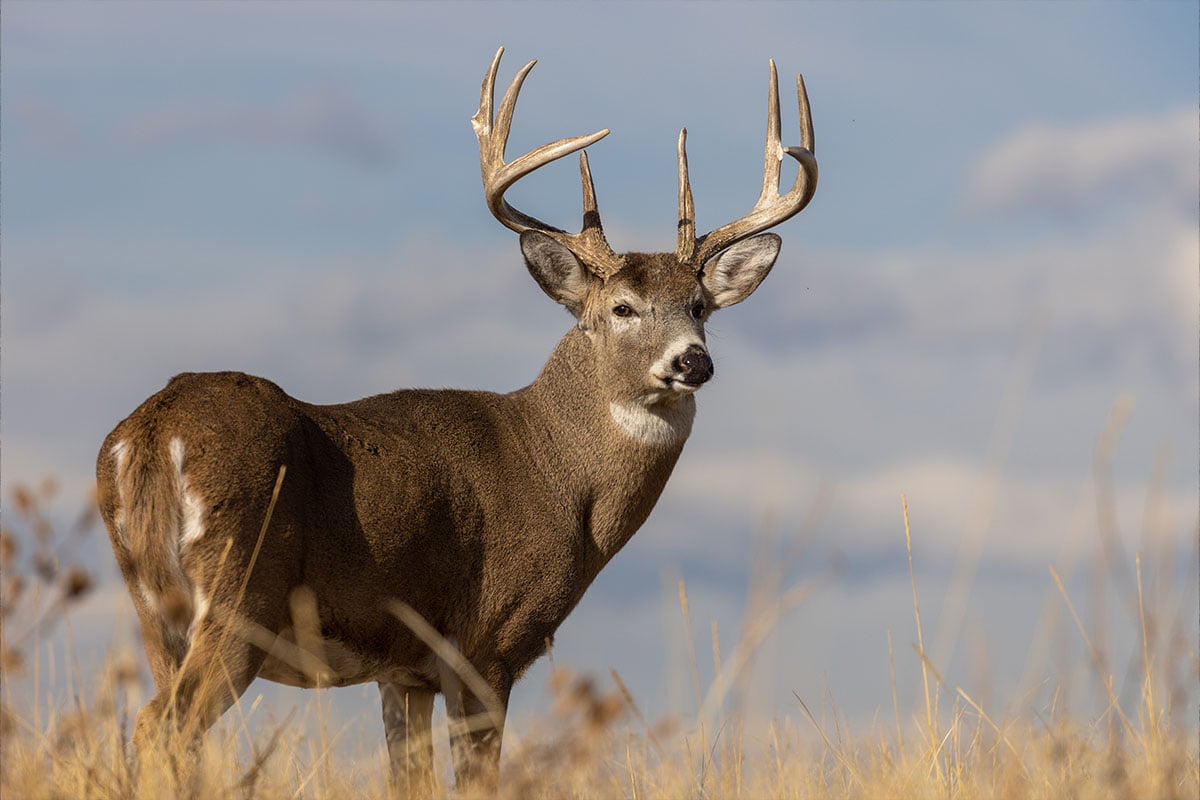
As any experienced hunter knows, whitetail deer are some the wiliest and most alert animals in the Eastern woods and thus, they are also some the most difficult animals to hunt. Consequently, learning to hunt whitetail deer can be a daunting task for a novice bowhunter.
Fortunately, this task can be broken down into a series of relatively simple steps that any bowhunter can follow to a successful hunt. This guide will cover the core components of bowhunting whitetail:
- Scouting Deer Habitat
- Identifying Sleeping Areas
- Identifying Food Sources
- Identifying Travel Paths
- Recognizing Signs of Deer
- Choosing a Stand Site
- Choosing A Bow
- Choosing Arrows
- Knowing Where to Aim
- Learning to Judge Yardage
Scouting Deer Habitat
In order to successfully hunt whitetail deer, you first have to know where to find them. The only way to do that is to get out and scout. However, scouting involves a bit more that simply picking a patch of woods and walking around a bit.
Instead, you first have to understand what type of habitat whitetail deer prefer.
Whitetails inhabit a wide range of environments:
- Open northern hardwood forest
- Dense southern pine and palmetto forest
- Mountains
- Foothills
- Coastal plains
- Swamps
So how do we find deer if they can be just about anywhere? You can often look online to find reports from other hunters. Many whitetails are also drawn to “edge habitats,” or places where two types of habitat intersect. Changes in color and texture on a satellite map indicate an “edge,” which might be a good place to get started.
If you suspect deer might be in the area, the next step is to go find them. At that point, it’s simple: understand their basic needs, and you’ll find your way to whitetail. Any deer needs the following:
- A safe place to sleep
- Easy access to their favorite foods
- Safe travel corridors between food and rest
Identifying Sleeping Areas
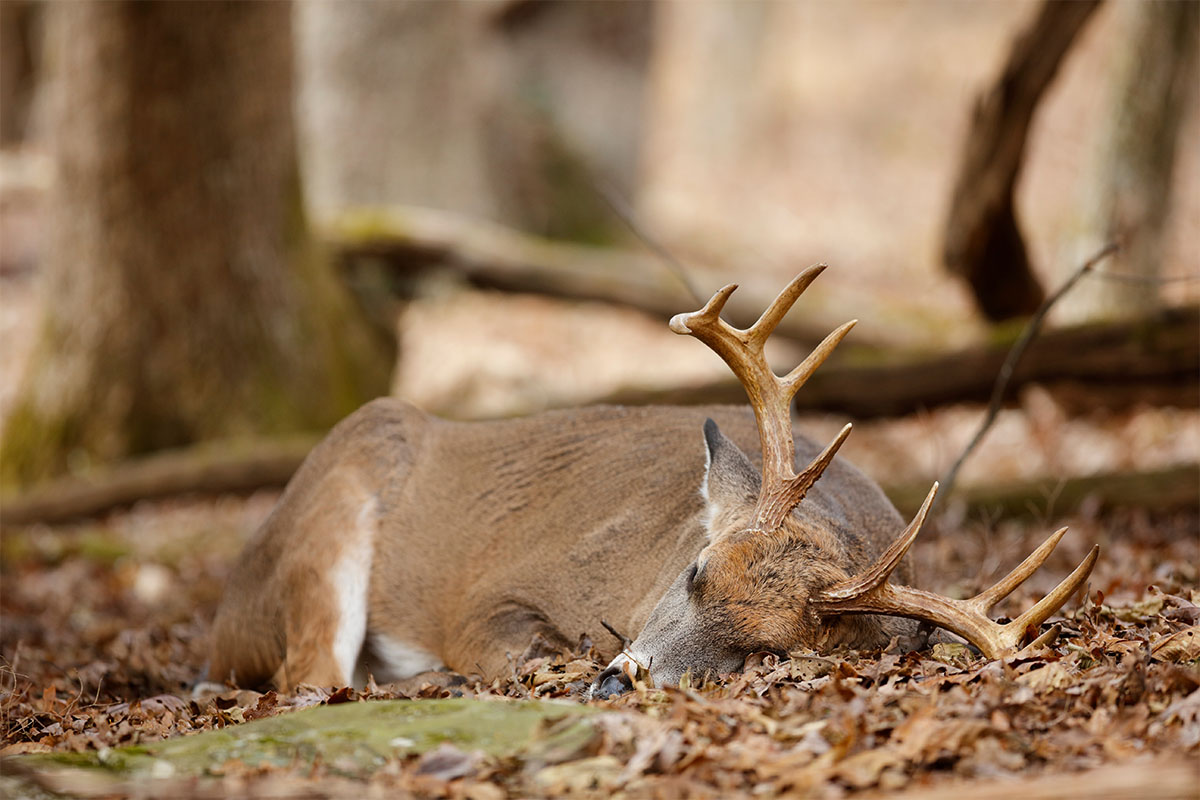
Security is the most important thing to a deer. They look for areas of dense vegetation where predators will have difficulty approaching them without alerting the deer to their presence.
If you know where you’ll be hunting, you can pre-scout for dense vegetation using Google Earth. This tool provides hunters with a satellite image of nearly anywhere on Earth and thus, it's an excellent means of gaining a bird's eye view of your hunting area as well as identifying potential bedding areas, food sources, and travel corridors.
A print image of your area as represented on Google Earth can be a great help in the field. Look for distinct, worn, trails exiting from these areas and make a note of them on your printed map.
Finding Favorite Food Sources
Hunters should make a note of any agricultural fields or orchards that may be located near their hunting area. Crops, fruits, and nuts are all favorites of deer, and by identifying the main sources of these foods through Google Earth and/or your scout, you’re likely to find more clues of nearby whitetail.
| Fall Woody Plants | Oaks, Black gum, Hawthorn, Greenbrier, Jessamine, French mulberry, Blackberry, Rose, Honeysuckle |
| Fall Forbs | Composites, Pussy’s toes, Wild lettuce, Beggar’s lice, Bellflower, Pokeweed |
| Fall Crops | Wheat, Soybean, Rye grass, Clover, Sorghum, Millet, Corn |
| Fall Fruits | Persimmon, Apples, Grapes, Muscadines, Pokeweed berries, Autumn Olive berries, Mayapples, Maypops, Common Pawpaw |
| Fall Nuts | White Oak Acorns, Hickory nuts, Beechnuts |
Make note of any food sources that you find on your map as you scout.
Identifying Travel Paths
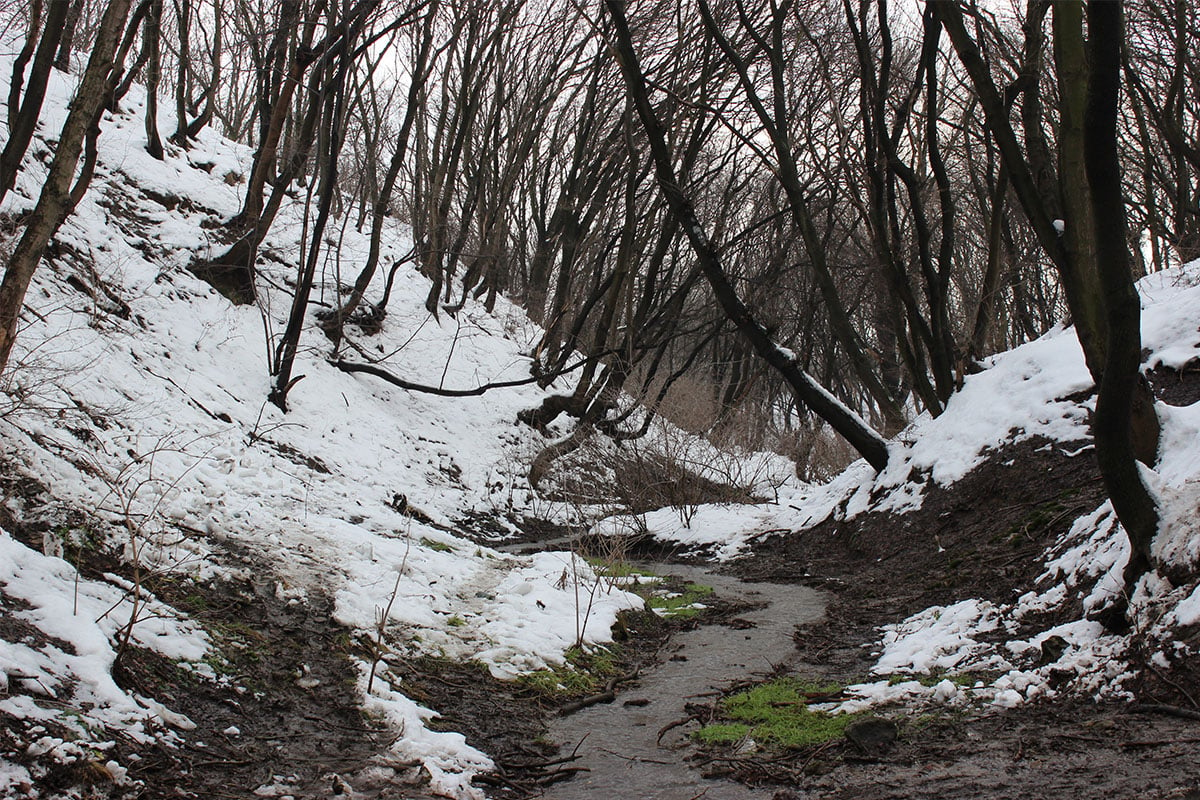
Now that we have bedding and food sources, we look for paths between the two. Deer particularly like to travel through areas that will provide concealment through narrow paths, including:
- Narrow, covered trails: narrow band of trees, ditches, gullies, etc.
- Funnels: man-made features or terrain features that channel whitetail deer as they travel, like agricultural fields, fence lines, hedgerows, windbreaks, creeks, swamps, riparian zones, hillside benches, and ridgetop saddles.
- Choke points: places where the funnel forces the deer to travel a particular point, such as a shallow ford in a creek, a bottleneck in a stand of timber, or an open gate in a fence line.
As you’re scouting, make note of any droppings, active rubs, or scrapes that you find, and note if you can tell whether they are fresh or old. Which brings us to…
Recognizing Deer Sign
You now know whether deer might be in the area, based on bedding, food, and trails. But are there actually deer here? Signs of deer include:
- Tracks
- Trails
- Droppings
- Rubs
- Scrapes
- Signs of feeding activity
Tracks & Trails
Deer trails can range from faint traces in the leaf litter to deeply worn ruts. Trails are most heavily worn near bedding areas and in favored travel corridors with narrow bands of dense foliage.
Deer have cloven hooves that leave an impression which appears similar to two teardrops placed side by side. The narrow end of each hoof is the front and indicates their direction of travel.
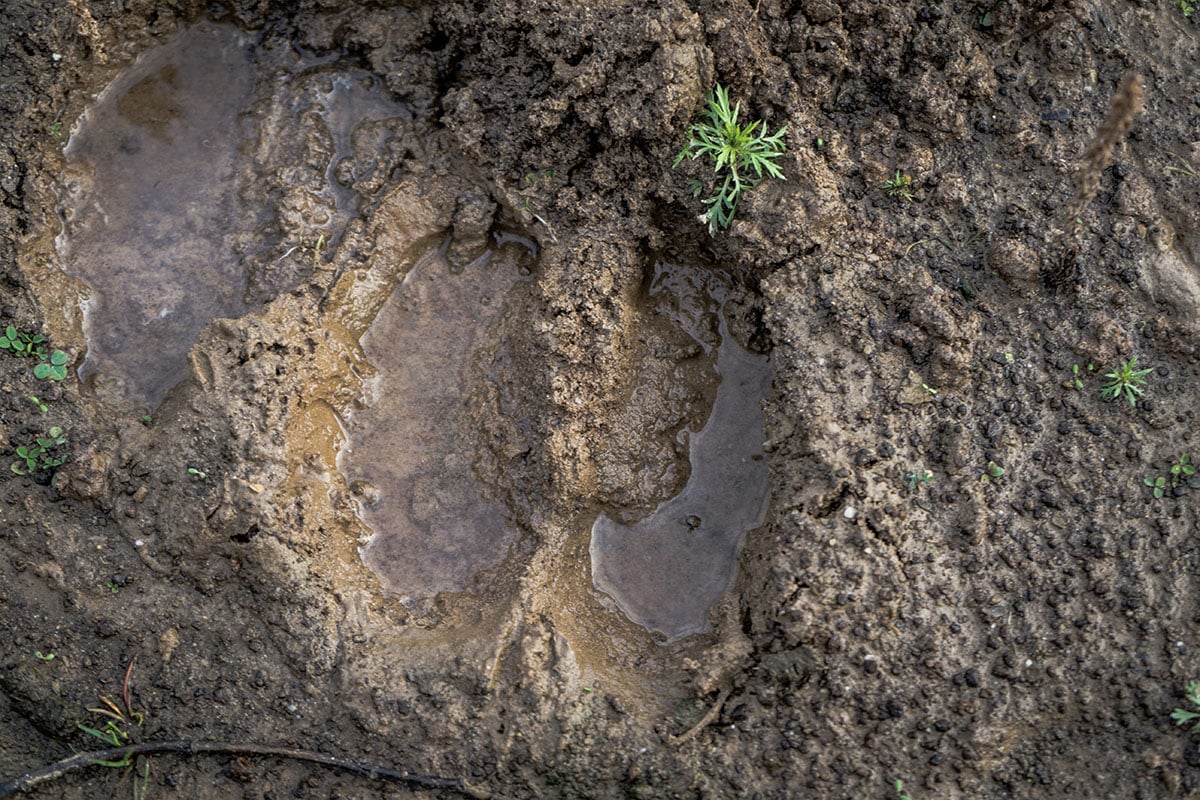
Tips for following tracks:
- Expect denser tracks near bedding and favored travel corridors
- The narrow end of the print indicates the direction of travel
Droppings/Scat
Because deer commonly eat fibrous and woody plants such as greenbriar and honeysuckle vines as well as the tips of oak and blackgum limbs and hawthorne bushes, they have a need to defecate often just like cows and horses. Deer scat most often appears as a small pile of round, dark brown, or black pellets with a fibrous texture.

Rubs & Scrapes
Learn how to recognize both "rubs" and "scrapes".
- Rub: a sapling or small tree against which a buck has rubbed his antlers in order to remove the velvet, leaving a section of the tree without bark.
- Scrape: an area on the ground where a buck has scraped away the leaf litter to create a section of bare ground which he then urinates on in order to advertise his presence to any does in the area. Accompanied by tracks and a urine odor.
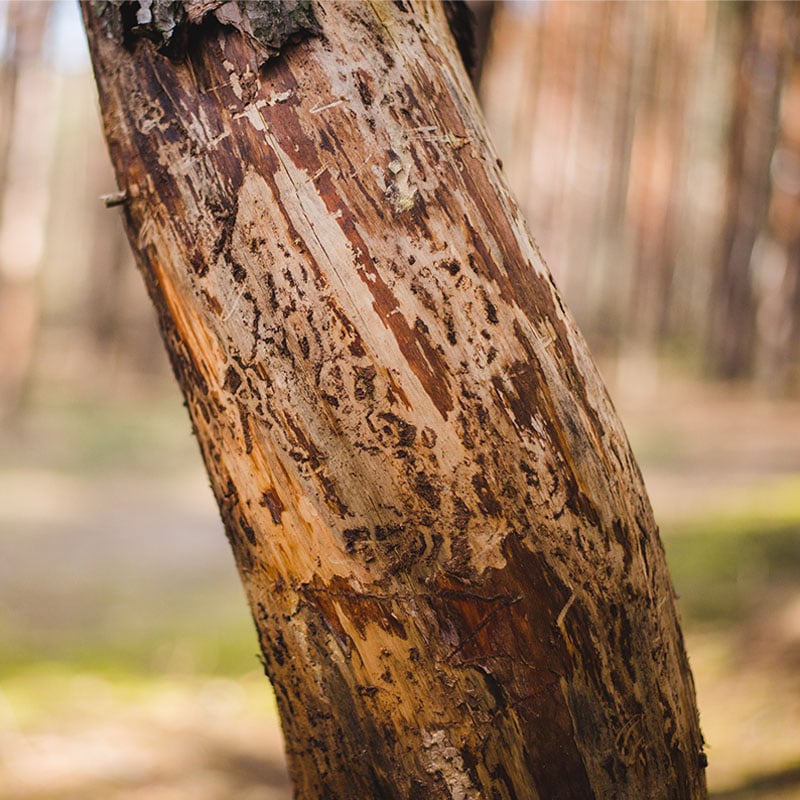
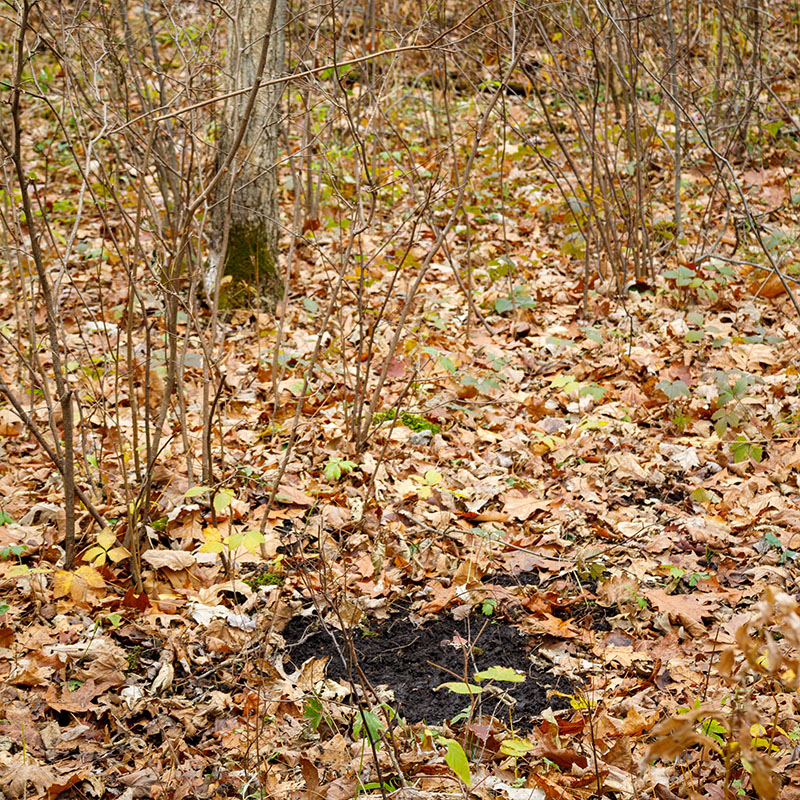
Rubs and scrapes are extremely helpful for two reasons:
- They indicate the presence of a mature (antlered) buck.
- Scrapes often indicate a buck’s trail, making them a great place to set up a tree stand or ground blind.
Choosing a Stand Site
Now it's time to choose a location to hang your tree stand or set up your ground blind. There are three main options of where to set up:
- Adjacent to a bedding area
- Adjacent to a trail
- Overlooking a favorite food source
Each of these three options has strengths and weaknesses.
Tree Stand Placement Pros & Cons
| Placement | Pros | Cons |
|---|---|---|
| Bedding |
|
|
| Food Sources |
|
|
| Trails |
|
|
Setting Up Near Bedding
Bedding areas are often easier to locate than food sources thanks to the heavy tracks. They are often the scarcer of the two resources in any given habitat, so deer will return repeatedly. Mature bucks spend more time in their bedding area than any other location because dense cover provides shelter from both predators and hunters.
However, you are far more likely to alert the deer to your presence when hunting near bedding because the deer may hear you when you walk in or, they may catch your scent if you fail to approach from downwind or, if the wind is swirling. Deer will simply use a path farther from your stand location if they do hear you or catch your scent and thus, you may likely never see them.
Setting Up Near Food Sources
It’s easier to set up near a food source without spooking the deer. However, deer don't always approach a food source from the same direction. Even if you do manage to find a favorite food source such as a white oak that is dropping acorns, it can be difficult to determine exactly where to hang your tree stand or place your ground blind. Choose a location with a wide field of view and which the terrain and/or foliage will funnel the deer to you.
Setting Up Near Trails
Many hunters see trails as the best place to set up. They offer a stronger sense of where deer will approach from, without deer already being there for you to startle or alert. Just be mindful of wind direction, as it can be complicated to plan for wind if deer might be approaching from multiple directions. Use your map and notes to determine the most likely places deer may be coming from, and plan accordingly.
Choosing a Bow
When choosing a bow for hunting whitetail deer, the very large majority of hunters prefer compound bows over recurve or longbows. However, they each have both advantages and disadvantages over the other.
Bow Pros & Cons
| Bow Type | Pros | Cons |
|---|---|---|
| Recurve |
|
|
| Longbow |
|
|
| Compound Bow |
|
|
Recurve Bows

Both longbows and recurve bows are light as a feather in the hand when compared to a compound bow. In addition, they are both quiet as a whisper when compared to a compound bow. But, they also impart far less velocity to the arrow than a compound bow does and thus, they produce a far more arced trajectory.
Longbows and recurve bows are just as accurate as compound bows, but they generate significantly less hand shock. Many archers find that they can shoot both longbows and recurve bows more accurately than they can a compound bow.
Most recurve bows have threaded metal inserts embedded in the riser on the side opposite the sight window which enables an archer to attach a set of bow sights.
Longbows

While recurve bows generally impart slightly more velocity to an arrow than a longbow with the same draw weight does, most archers find longbows to be more forgiving of less than perfect form than recurve bows.
Most longbows are not equipped for sights to be added.
Compound Bows
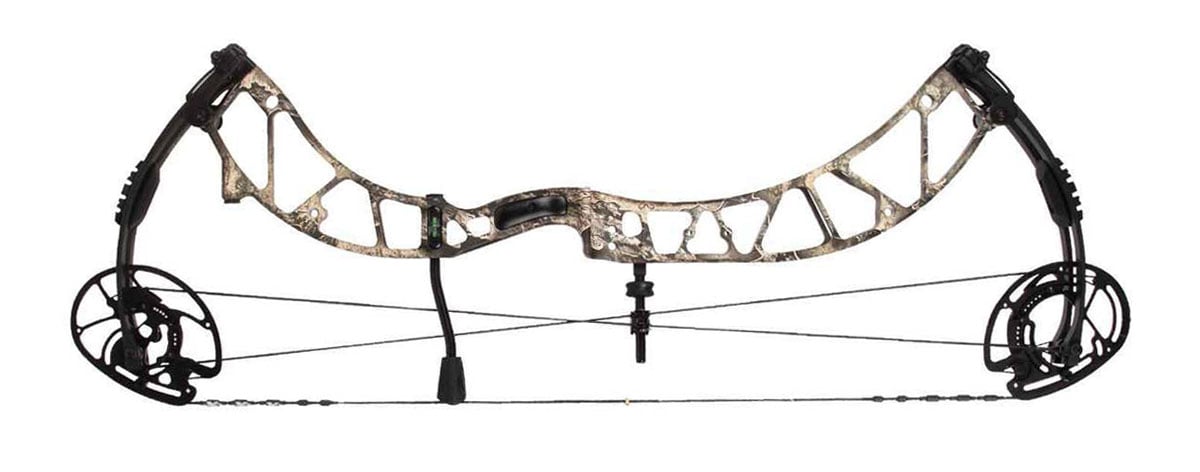
Compound bows are significantly heavier than either longbows or recurve bows which can make them tiresome to carry. While modern compound bows with either pre-loaded or parallel limbs are much quieter than older designs, they still produce significantly more noise than either a longbow or a recurve bow does. Thus, deer are far more likely to hear you release an arrow from a compound bow and respond accordingly.
Considering Draw Weight
Longbows and recurve bows require the archer to hold the bow's full draw weight when at full draw, which many archers find to be a difficult task. Consequently, most archers who choose longbows or recurve bows choose draw weights 10 to 15 pounds less than they would when choosing a compound bow.
In addition, due to the cams (offset pulleys) incorporated into their design, compound bows reach their peak draw weight at some point prior to reaching full draw. After that point the draw weight drops to 65 to 80 percent of its peak. Therefore, compound bows enable the archer to hold their bow at full draw for extended periods while waiting for a viable shot.
Average Draw Weights
| Recurve/Longbow | 45-55 pounds |
| Compound Bow | 60-70 pounds |
Choosing Arrows
We now know that recurve and compound bows impart different velocities. Because of this, you’ll want to choose different arrows for each.
The lower velocity of recurve and longbows means you’ll need a heavier arrow and broadhead. This will give you the inertia needed to pass through the deer’s body, but it also causes a greater arc to the arrow’s trajectory.
Compound bows impart far more velocity to an arrow than either a long bow or a recurve bow with the same draw weight does due to their cams. Therefore, bowhunters can use far lighter arrows and broadheads when hunting with a compound bow because the increase in arrow velocity will produce a comparable amount of inertia. The lighter weight creates a flatter trajectory and a better shot.
Arrow & Broadhead Weights for Deer Hunting
| Recurve Bow | Compound Bow | |
| Arrow | 8-10 grains/inch | 5-6 grains/inch |
| Broadhead | 175-225 grains | 100-125 grain |
Knowing Where to Aim
A bullet kills by imparting kinetic energy to the deer's body in order to produce hydrostatic shock, as well as a temporary crush cavity and a permanent wound channel. A broadhead attached to the end of an arrow kills by exsanguination, which means that it causes rapid blood loss and thus, a rapid reduction in blood pressure that deprives the deer's brain of oxygen.
While piercing a deer's heart with an arrow will cause the deer to expire more quickly than piercing its lungs, a deer's heart is a far smaller target than its lungs and thus, most experienced bowhunters choose lung shots over heart shots.
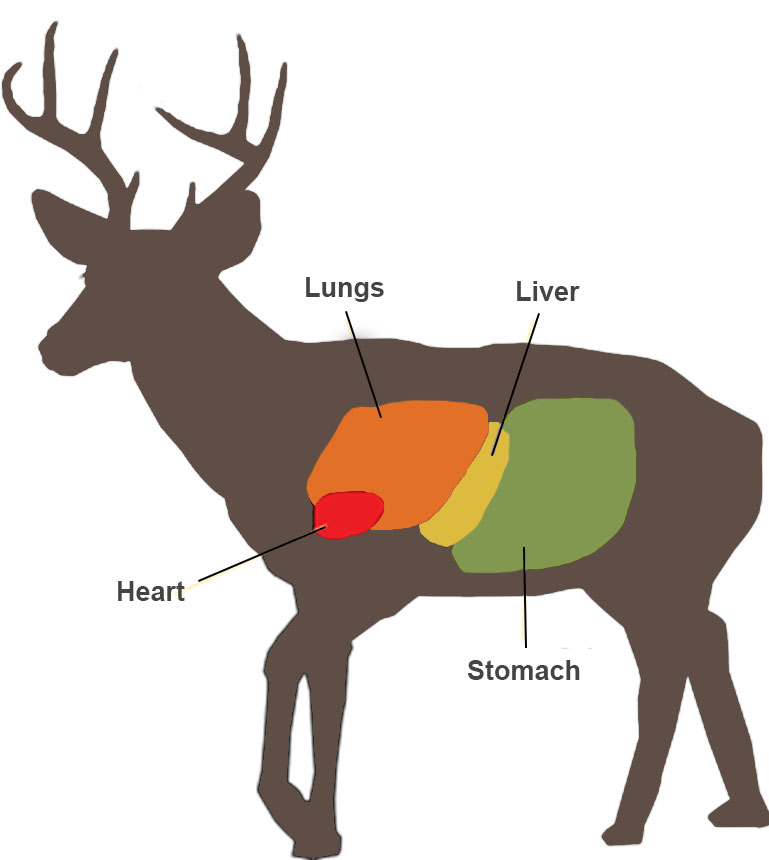
Learning to Judge Yardage
In addition to knowing where to aim, learning to accurately judge the distance to your target is a skill that all bowhunters must master. This skill takes time and practice to master.
Practice shooting often at increments of ten, twenty, and thirty yards. Thirty yards is the maximum distance for most bowhunters. This way, you will get better at judging distances and adjusting your angle.
Judging distance can get more complicated at an upward or downward angle, and especially from a tree stand. A trick that experienced bowhunters use is to look at the ground rather the deer when measuring yardage since this trick will provide you with a more accurate measurement.
Tips for measuring distance:
- Practice shooting at various yardages so you can get a feel for adjusting your trajectory and estimating distance.
- If you’re shooting at an angle, look at the ground rather than the deer for a more accurate estimate of distance.
Conclusion
So, while hunting whitetail deer with a bow can certainly be an enjoyable pastime, it does present hunters with a significantly greater challenge than doing so with a rifle or a handgun. Once you master the basic skills of accurately shooting a bow as well as learning to locate deer and choosing a viable location to hang your tree stand or set up your ground blind, bowhunting whitetail deer can provide you with a far greater sense of accomplishment when you do harvest a deer.
Shooting a deer with a bow is both far more difficult and far more exciting than doing so at longer ranges with a firearm, thanks to the closer quarters. If you are the type of deer hunter that enjoys challenging yourself, then bowhunting will present you with the ultimate challenge since it requires that you to elevate your skill to a far greater level than that of the average gun hunter.